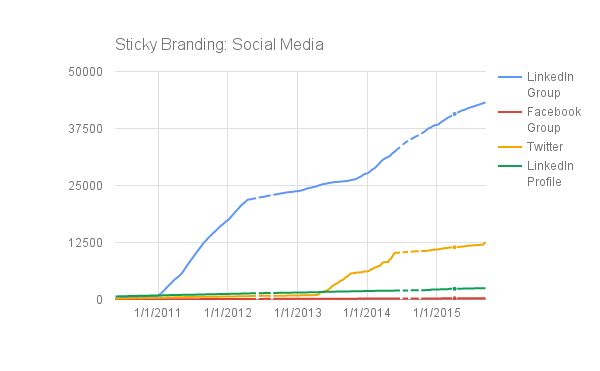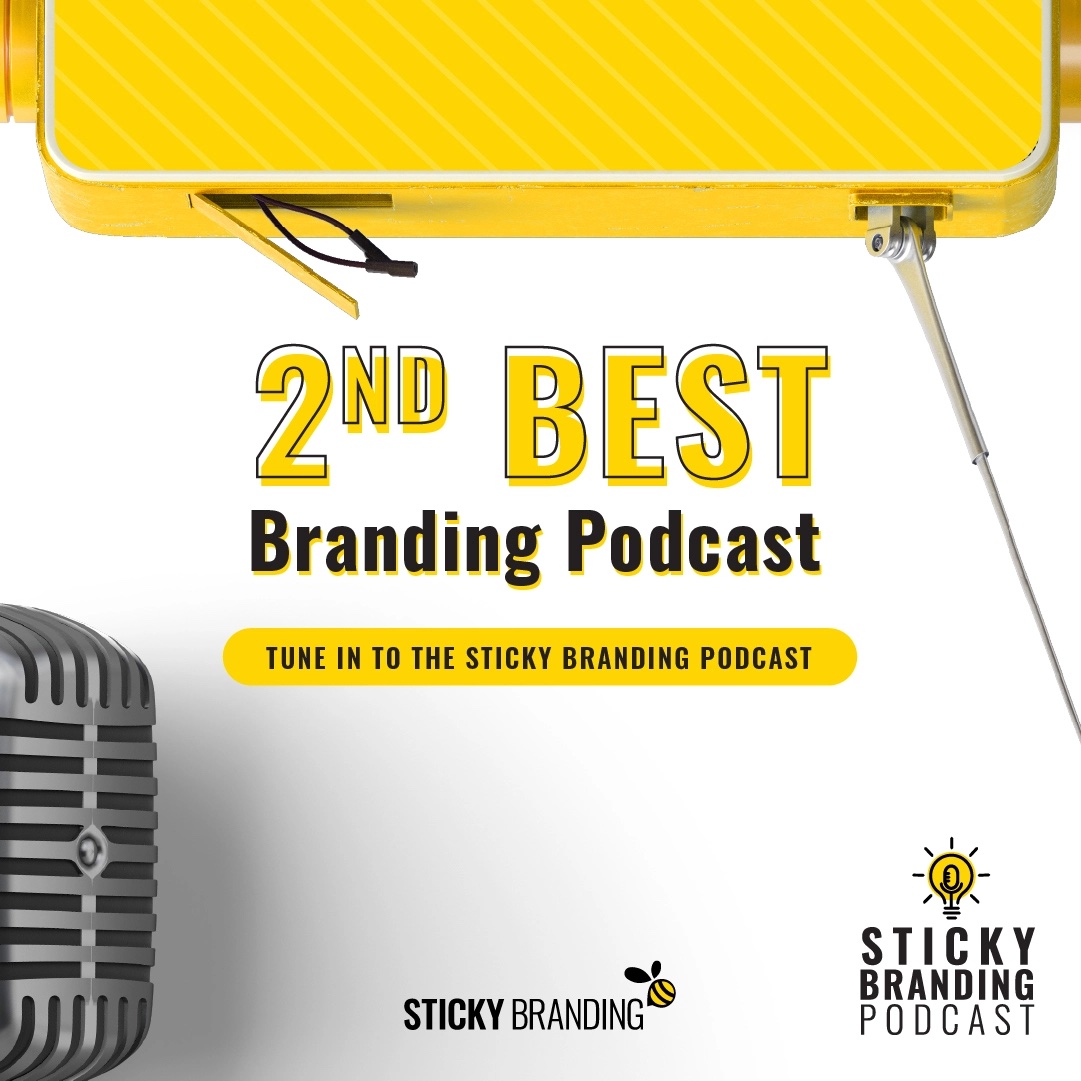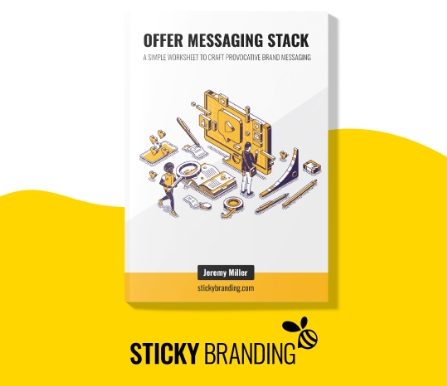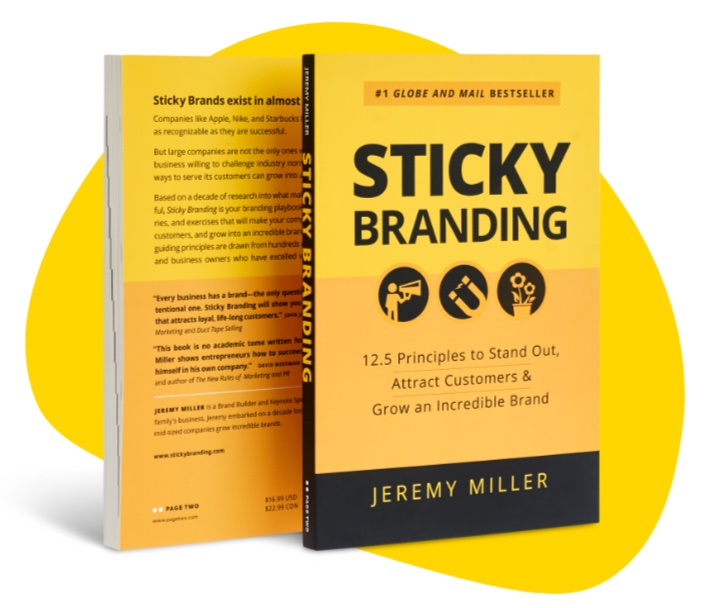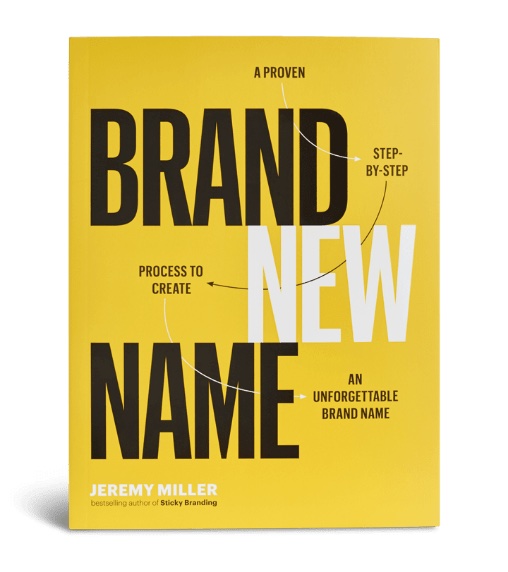Everyone has a personal brand. Like a business, your brand is your reputation. It’s how people perceive you and what they say about you. You have a brand by simply being a professional and showing up for work every day.
The topic of “personal branding” is not for people who just want to have a positive reputation. Personal branding is for people who want to get famous.
When you look at your industry and you look at the people you admire, chances are their reputation is greater than their network. They reach and influence a lot of people. And that’s what personal branding is all about.
Personal branding is a deliberate process to stand out, engage an audience, and deliver to them a great deal of value. And you have the power to do this. Anyone can grow their personal brand, be an influential member of their community, and even develop a wee bit of fame.
The strategy for personal branding is practical and accessible: consistently create and share content that a defined audience values. That’s it in a nutshell.
So let’s unpack this idea and examine a personal branding strategy that you can adapt and apply to your business right away.
We All Start Somewhere
We all have to start somewhere.
Personal branding is very similar to a fitness regime. Nobody walks into a gym for the first time and squats five hundred pounds. Developing strength is a process. It takes time, effort, and deliberate steps to become very strong. Personal branding is the same.
You can see this in my stats (Graph: Sticky Branding Social Media). In 2010 I hit the reset button on my content marketing and social media activities. I was transitioning from my family’s business to launch Sticky Branding.
I was already well versed in digital marketing, but the audience for my content was tied to the business. To grow my personal brand under Sticky Branding meant starting from scratch.
On June 25, 2010 my social media reach was 806 people. I had 638 LinkedIn connections, 158 Twitter followers, 5 Facebook Page Likes, and 5 members of the Sticky Branding LinkedIn Group.
Fast forward to today, a little over five years later, and my reach across these four platforms exceeds 58,500 people. The audience grows on average by 255 people per week.
It’s easy to see the size of my LinkedIn Group and say “I want that.” But like everyone else, I started from zero. You don’t have to feel overwhelmed when you start personal branding. Start with what you have and grow it from there.
Define Your Audience
As with corporate branding, a personal brand cannot be all things to all people. A strong personal brand is clearly linked to a discernible community or audience.
Mara Einstein writes in Brands of Faith, “To be effective, authors must be associated with a single topic.” She argues that a personal brand is linked to a topic. For example, an author with a brand in personal relationships will struggle to speak with authority on another topic like corporate finance, even if she knows a lot about the topic.
The reason for this is perception. As a personal brand grows it becomes intrinsically linked with the audience and their expectations of you.
Your audience is the focal point of your personal brand, and this is a very important distinction. Without a clearly defined audience you risk preaching aimlessly to the masses, or worse yet talking to yourself.
You can define your audience in two ways:
- Category: Your expertise or topic of interest.
- Demographics: The profile of people you are trying to engage.
Category
One of the fastest and easiest ways to define your audience — at least in the very beginning — is to select your “Amazon category.” Where do people go on Amazon to find your topic or area of expertise?
For example, when I wrote Sticky Branding I positioned the book by its Amazon category: branding. A book is a product, and I was writing for people that have “branding on the brain.”
Amazon is a great resource for selecting your category, because they are dividing books into logical segments that generate traffic. This gives you an indication of where you can position your brand, as well as who are the influencers that are active in that community.
Demographics
If your personal brand doesn’t fit into a nice box, like “branding,” you may gravitate towards defining the attributes of your audience.
Tim Ferriss — best known for his book the 4-Hour Workweek — has a well defined audience. He said in a recent presentation, “My first market for the 4-Hour Workweek was 25 to 40 year old tech-savvy males in San Francisco and New York.”
The tight demographic focus helps Tim not only create content that will resonate with his target audience. It helps him market and grow his brand. Rather than trying to engage everyone, he focuses his marketing and public relations on places he knows his target audience will be.
Content Marketing Routine
Defining your audience sets the tone and direction for your content. This is where the rubber hits the road.
Your personal brand is tied to how well you can reach and engage your audience. And this is all about content and content marketing. The more content you create, the more opportunities you will have to engage your audience.
The challenge is personal branding is a marathon, not a sprint. To be effective you have to show up month after month, if not day after day. This is a journey that doesn’t have a conclusion.
With that in mind, look at your content marketing strategy as a routine. You are going to set a pace and stick to it:
- Minimum: 1 post per month
- Optimal: 1 post per week
- Powerhouse: 3+ posts per week
The minimum pace is one piece of content per month, whereas a powerhouse will publish several times a week (and some even post multiple times per day).
The key is to choose the pace that you can sustain.
Pick Your Medium
If you’re a great writer, write. If you’re a great speaker, speak. If you’re a great interviewer, interview.
The most common form of content marketing is writing. People blog, write white papers, or participate in discussions on social media. The web is built for the written word. But writing is only one option.
Choose the medium that fits your talents and delivers the most value for your audience. You can podcast, curate images in Pinterest, create infographics, network on LinkedIn, produce videos for YouTube or Vine. The choices are really endless.
Pick the content platform that both interests you and plays to your strengths. I write and speak, because that’s what I’m good at. What’s your medium of choice?
Email First
Email is your most important content distribution tool. If you were to choose only one tool to engage your audience, choose email.
According to a McKinsey study, email conversion rates are forty times higher than Facebook and Twitter. The report goes on to say, “91 percent of all US consumers still use e-mail daily, and the rate at which e-mails prompt purchases is not only estimated to be at least three times that of social media, but the average order value is also 17 percent higher.” That’s astonishing.
Email is old and boring, but it works. Begin developing your email lists early. Encourage visitors to your website to subscribe to your content via email. Ask people if you can add them to your lists.
One email subscriber is worth more than 1,000 Twitter followers.
Automate the Process
The work described above may seem overly taxing, but a lot of it can be automated.
My platform is almost entirely automated. The bulk of the work goes into creating the content, but the tools do the heavy lifting to share the content.
The tools I recommend (and use) for content marketing:
- WordPress Website: Use a custom WordPress blog for your content. Facebook and Instagram make it really easy to build your brand online, but you don’t own those platforms. Treat social media as an outpost to your content, and publish to your website first.
- Co.Schedule: Co.Schedule is a brilliant social media scheduling tool that integrates fully with WordPress. When you create a post you can schedule all of your social media updates. This helps keep your content top of mind.
- MailChimp: The MailChimp RSS-to-Email service allows you to distribute content from your blog directly to your email subscribers. It grabs the content at a predefined time and packages it in a custom designed email template. This is the most important tool in my content distribution arsenal.
- Buffer: Buffer is great for all of your other social media sharing and scheduling. You can build schedules for each social media platform, and fill them up with content and updates so that you’re always active online.
There are even more tools you can use, but this is a good starting point. Use the tools to automate your process and make your life easier. The idea is to make personal branding sustainable.
Get OCD on a Topic
We’ve talked a lot about creating and sharing content, but this inevitably leads to a question. “What do I write about?”
Lack of clarity on what you’re creating can be a real stumbling block to building your personal brand.
If you’re struggling with what to write about get OCD — obsessive-compulsive disorder — on a topic. Choose a skill or a practice that you want to develop, and take your readers on the journey. Share with them what you’re learning, your results, and the tips and tricks you are acquiring in real time.
This is what Tim Ferriss does. He calls himself the “human guinea pig.” He goes out of his way to learn new skills, and then deconstructs them so that others can learn from his experience.
I love this approach. It makes content marketing and personal branding so much easier, because you’re speaking from an authentic position. You may not know everything about the topic, and that’s ok. Your job is to share your experiences, the lessons that resonate with you, and how others can learn from you.
The process is simple. Commit to a deep dive on a topic for at least six months. Read everything you can find on the topic. Talk to as many experts as you can. And apply everything you’re learning to master the skills. As you go through this process create content so that others can learn from you.
For example, you may want to master search engine optimization, and that’s what you’re going to delve into for the next six months. SEO will be your world. You’ll then write about it, speak about it, and share your lessons with your audience.
Your learning experiences will shape your content by providing you a meaningful topic. It will also make your content more interesting, because your passion and interests will be hard to contain.
The only caveat is you’ve got to get OCD on a topic that resonates with your audience.
Connect to New Audiences
Personal brands don’t grow themselves. You’ve got to take the initiative and responsibility to grow your audience.
Guest posting is an integral part of growing your personal brand online. It’s the most effective way to reach new audiences and build brand awareness.
A good rule of thumb is a one-to-one content creation plan. For every piece of content that you create for your own website and social media channels create one more for someone else.
For example, I generate four to six guest posts per month. Some posts are for regular columns, and others are one offs. These articles deliver a ton of value to my personal brand. They provide credibility, because a site with authority is endorsing my brand. They provide inbound links for my website, which drives more visitors to my website. And most importantly, these articles reach new people that have never heard of me before.
Put content outreach as a cornerstone of your personal branding strategy. This is where you’ll really get famous.
With your content outreach strive to develop columns — places you can share content on a regular basis. Your brand grows with repeat impressions. It’s a goldmine if you can land a column in a major publication like the Huffington Post, Forbes, or HBR.
Secondarily, continually work to reach new audiences. Keep seeking new places where you can share your content and grow brand awareness.
Find Accelerators
Personal branding is not a solo mission, it’s synergistic. There are plenty of people who have been there and done that, and many of them are more than willing to help you out.
When I launched Sticky Branding (the book) I hired Gini Dietrich and her team to help me market it. I made one simple ask to Gini, “Let me ride in your wake.”
Gini is ahead of me in the personal branding journey. She’s written two bestselling books. Her blog, Spin Sucks, is one of the most influential PR blogs in the world. And she’s a sought after professional speaker. She was doing everything I was (and am) aspiring to.
Gini has been a fabulous mentor, but we’ve also helped each other grow our brands. We’ve collaborated online, and pointed our spotlights at each other. This helps us raise each other’s profiles while linking our audiences. This is very beneficial for both of us.
Collaboration is key part of personal branding. This is the networking component of your personal branding strategy. Look for the influencers of your community, and identify ways you can bring each other value. You’ll find this is a small world, and the accelerators are easier to connect with than you might think.
Branding Is a Journey, Not an Event
Growing your personal brand is a journey. You’re setting out on a process to consistently engage your audience and bring them value.
Seth Godin and Chris Brogan, for example, are famous and have massive followings. But they’re not overnight successes. Seth started his blog in 2002, and Chris began blogging in 1998.
Longevity is a fundamental ingredient to growing your personal brand. Approach your personal branding strategy with a long view. The longer you commit to this journey the more impact you will achieve.

